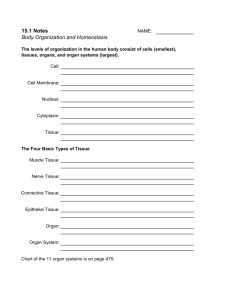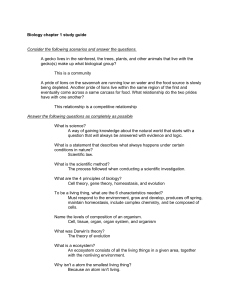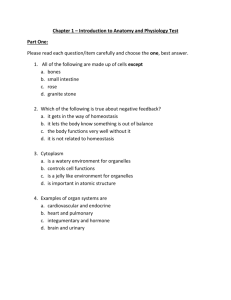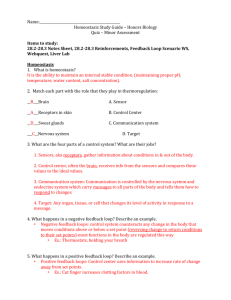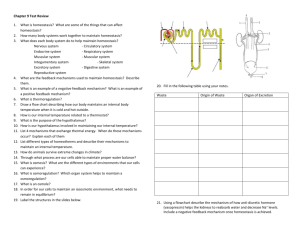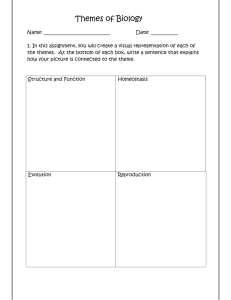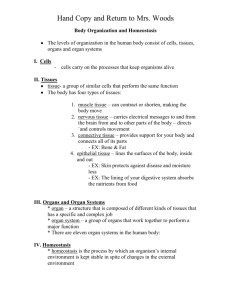Homeostasis Study Guide: pH, Thermoregulation, Feedback Loops
advertisement
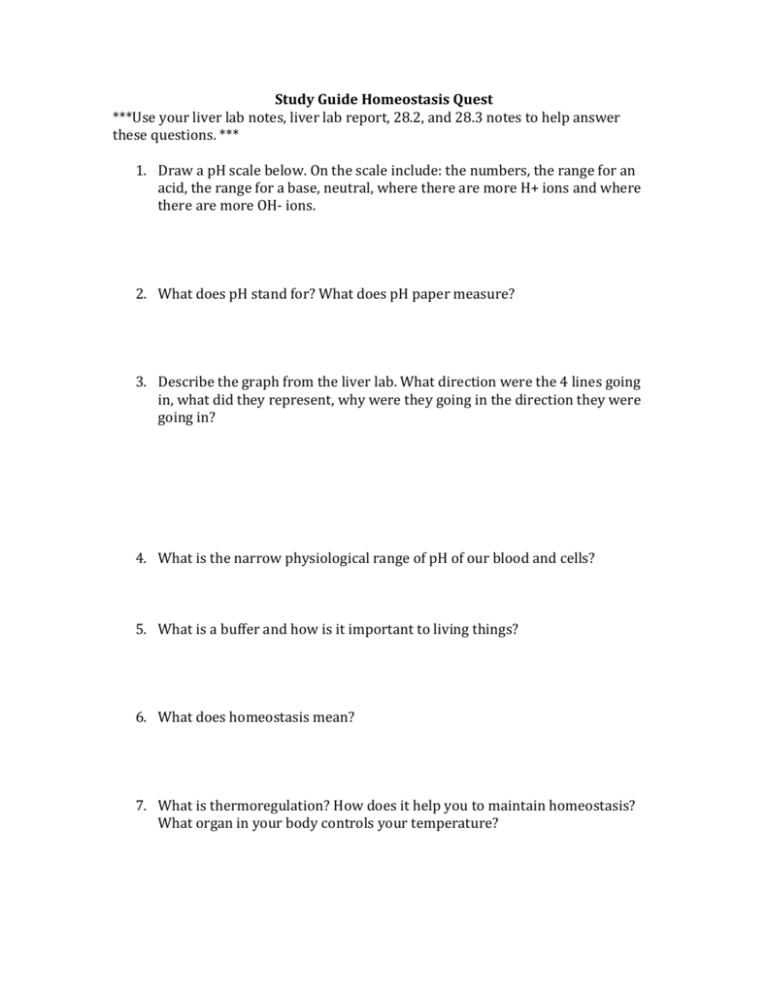
Study Guide Homeostasis Quest ***Use your liver lab notes, liver lab report, 28.2, and 28.3 notes to help answer these questions. *** 1. Draw a pH scale below. On the scale include: the numbers, the range for an acid, the range for a base, neutral, where there are more H+ ions and where there are more OH- ions. 2. What does pH stand for? What does pH paper measure? 3. Describe the graph from the liver lab. What direction were the 4 lines going in, what did they represent, why were they going in the direction they were going in? 4. What is the narrow physiological range of pH of our blood and cells? 5. What is a buffer and how is it important to living things? 6. What does homeostasis mean? 7. What is thermoregulation? How does it help you to maintain homeostasis? What organ in your body controls your temperature? 8. Describe a negative feedback loop and give a biology example. 9. Describe a positive feedback loop and give a biology example. 10. Matching: Control Systems in the Body Control Center ______ Target _________ Sensors __________ Communication Systems __________ A. Last step, any organ, tissue, or cell that changes its level of activity in response to a message. B. First step, also called receptors, these gather information about conditions inside and outside the body. C. Third step, controlled by the nervous and endocrine system, which carry messages to all parts of the body. The messages are in the form of nerve impulses and hormones. D. Second step, usually the brain, receives information from sensors, compares the information to set values at which the body functions best, when conditions are out of that range a message is sent to the communication system.
